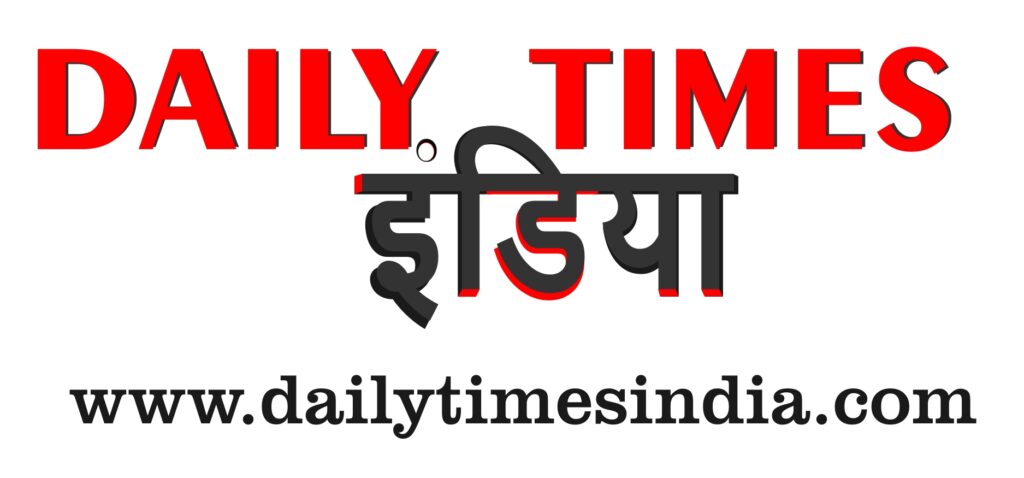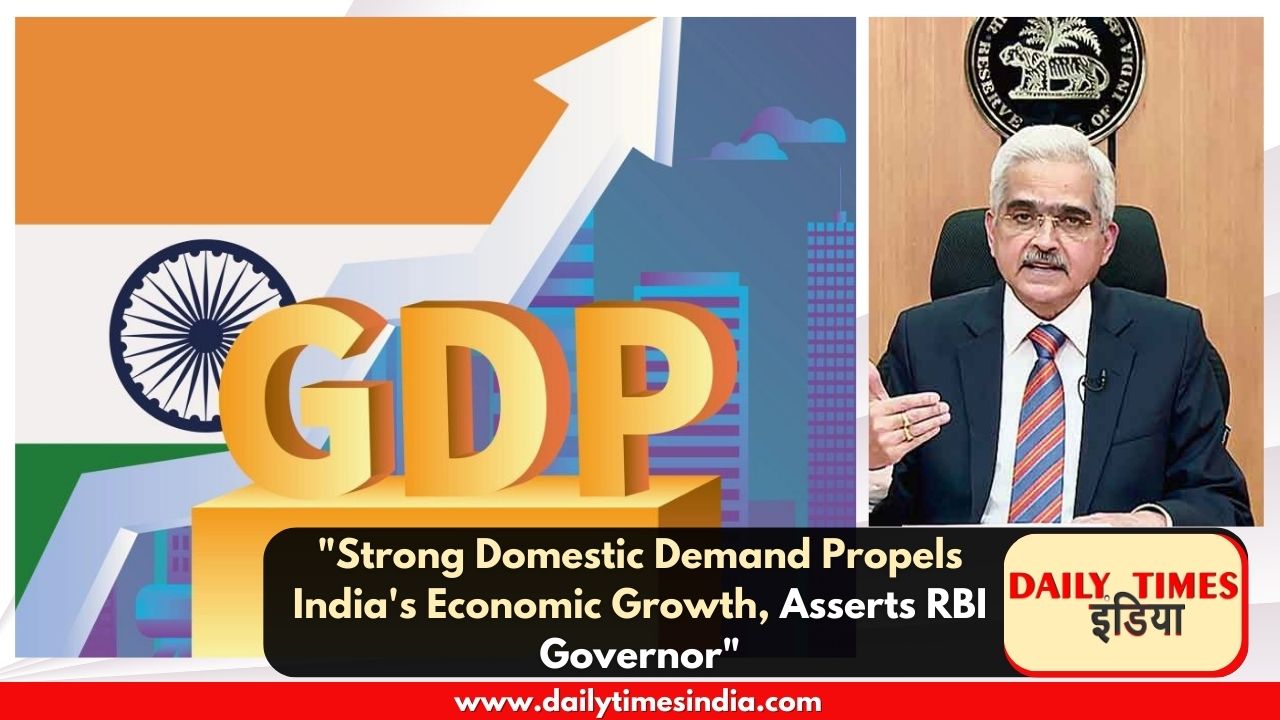NEW DELHI: In an address at the Summer Meetings organized by Central Banking in London, UK, Reserve Bank of India (RBI) Governor Shaktikanta Das expressed his confidence in India’s economic growth trajectory. He stated that India’s recent economic progress has been primarily driven by strong domestic demand and emphasized that the country is expected to continue being one of the fastest-growing large economies in 2023.
Governor Das highlighted the remarkable strides made by the Indian economy in recent years, noting its increasing integration with the global economy. Despite the global economic slowdown, India has witnessed robust growth, propelled by resilient domestic demand, particularly in terms of private consumption and investment. The RBI shared excerpts from his speech, shedding light on India’s economic achievements.
Central Banking in Uncertain Times: The Indian Experience – Opening Plenary Address by Shri @DasShaktikanta Governor, Reserve Bank of India – June 13, 2023 – Delivered at the Summer Meetings organised by Central Banking, London, UKhttps://t.co/MyejMvOxK6
— ReserveBankOfIndia (@RBI) June 13, 2023
Looking ahead, Governor Das projected India’s real GDP to grow by 6.5 percent in the fiscal year 2023-24. He expressed confidence that India will maintain its position among the fastest-growing large economies in the coming year. The National Statistical Office (NSO) recently released provisional estimates indicating that India’s real GDP growth for 2022-23 stood at 7.2 percent, surpassing the projected 7 percent.
Despite global challenges and the tightening of domestic monetary policy, several international agencies have forecasted India to be one of the frontrunners in terms of economic growth in the fiscal year 2023-24. This positive outlook is supported by the strong growth in private consumption and a sustained increase in private investment.
Governor Das also discussed regulatory and supervisory initiatives, highlighting the robustness of India’s banking system. He stated that the latest supervisory data indicates that all banks meet the necessary prudential requirements. Moreover, stress tests conducted on Indian banks reveal that they are capable of meeting minimum requirements even under severe stress conditions.
According to RBI press released, The COVID-19 pandemic scarred the global economy, causing unimaginable loss of life and livelihood. In India, our response amidst the imposition of nation-wide lockdown and social distancing was prompt and decisive. We were perhaps amongst the first few central banks to have set up a special quarantine facility with about 200 officers, staff and service providers, engaged in critical activities to ensure business continuity in banking and financial market operations and payment systems. Our monetary policy committee (MPC) reacted swiftly by reducing the policy repo rate sizeably by 115 bps in a span of two months (March-May 2020). Unlike advanced economy (AE) central banks which eased rates close to the zero-lower bound, we did not reduce the policy repo rate below our inflation target of 4 per cent. Together with other actions in the liquidity front, this helped us in supporting growth without fuelling inflationary pressures. This also helped in undertaking a faster reversal of stance later, without being market disruptive.
Along with the rate cuts, we infused significant quantum of liquidity through both conventional and unconventional measures to stimulate the economy, restore confidence and revive market activity, while being mindful of the need to ensure that our liquidity augmenting measures do not engender future fragilities. Our liquidity measures were unique in several ways: first, liquidity was provided only through the Reserve Bank’s counterparties (banks) for on-lending to stressed entities/sectors; second, asset purchase programme was for a limited period of six months and much smaller in size than advanced economies, and was confined to government securities only; third, collateral standards were not diluted while offering lending facilities; and fourth, loan resolution frameworks for COVID-19 related stressed assets were not open ended but subject to achievement of certain financial and operational parameters. Moreover, most of our liquidity injection measures had pre-announced sunset clauses, which helped in an orderly unwinding of liquidity on their respective terminal dates without de-anchoring market expectations. Overall, liquidity enhancing measures worth US$ 227 billion (8.7 per cent of GDP) were announced, of which funds availed were US$ 157.5 billion (6.0 per cent of GDP), it added.
At the height of the pandemic during 2020 and 2021, the MPC prioritised growth over inflation, given the frail economic conditions and notwithstanding intermittent inflationary pressures from supply shocks. For instance, supply-side pressures had nudged inflation above the upper tolerance band of 6 per cent in October 2020 and there were market concerns over the continuation of the accommodative monetary policy stance. Under these circumstances, we provided both state- and time-based forward guidance on continuing “with the accommodative stance of monetary policy as long as necessary – at least during the current financial year and into the next year …” as output remained well below its pre-pandemic level. In the second half of 2020-21, inflation eased in line with our assessment as supply side pressures abated. The time-based element of the guidance helped to anchor market expectations and moderate undue expectations building up at that time of a possible reversal of the monetary policy stance.
In early 2022, inflation was expected to moderate significantly with a projected average rate of 4.5 per cent for 2022-23, based on an anticipated normalisation of supply chains, the gradual ebbing of COVID-19 infections and a normal monsoon. Such expectations, however, were belied by the outbreak of hostilities in Ukraine since end-February 2022. Initially, the shocks came from food and fuel prices, which were mainly global in origin, but local factors from adverse weather events also played an important role in increasing food inflation. The shocks to inflation got increasingly generalised over the ensuing months. Moreover, strengthening domestic recovery and rising demand enabled pass-through of pent-up input costs to retail goods and services. This imparted stickiness to underlying core inflation and kept headline inflation at elevated levels.
Under these circumstances, the MPC quickly changed gears by prioritising inflation over growth and also changed its stance from being accommodative to withdrawal of accommodation. The MPC acted proactively by holding an off-cycle meeting in May 2022 and raised the policy rate by 40 basis points. This was followed by rate hikes, albeit of varying sizes, in each of the five subsequent meetings till February 2023. In all, we have raised the policy repo rate by 250 bps cumulatively between May 2022 and February 2023. Thus, we acted in a timely manner and have calibrated the quantum of rate hike with the changing inflation outlook. In recent months, there are signs of some softening in inflation, with headline inflation easing to 4.25 per cent in May 2023 from the peak of 7.8 per cent in April 2022.
The optimistic remarks made by Governor Shaktikanta Das during the Summer Meetings reflect the confidence in India’s economic prospects. With a focus on strong domestic demand, the Indian economy is poised to sustain its growth momentum and continue to be a leading player among the world’s major economies in the year ahead. As India navigates through global uncertainties, the RBI remains committed to implementing effective regulatory measures to ensure the stability and resilience of the country’s financial sector.






